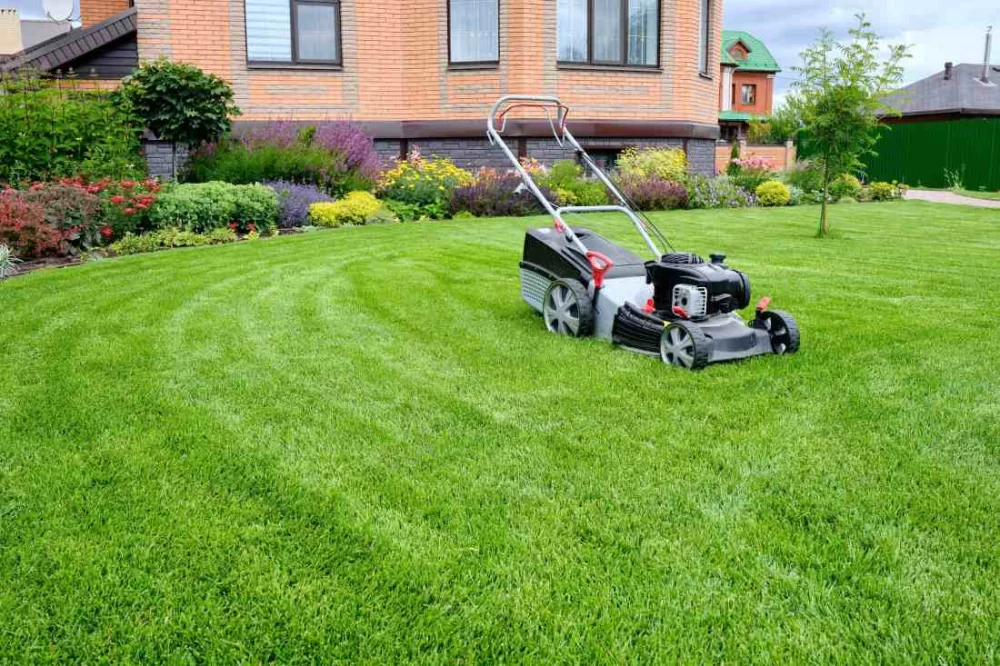
How to Keep Your Lawn Healthy with Drought-Resistant Grass Solutions
As a homeowner, one of the most challenging aspects of maintaining a beautiful lawn is dealing with drought conditions. Living in areas with water restrictions or hot summers can make it difficult to keep your grass green and thriving. But there’s good news—drought-resistant grass varieties can provide a sustainable solution, allowing you to maintain a vibrant lawn without wasting water.
Why Drought-Resistant Grass Matters
In many parts of the United States, drought conditions have become more common, and with them, the challenge of keeping a healthy, lush lawn. Traditional grasses often require a lot of water, which can be difficult to sustain during dry spells. Drought-resistant grasses, however, are specially designed to survive with minimal water, making them the perfect solution for anyone looking to conserve resources while still enjoying a beautiful lawn.
But how exactly does drought-resistant grass work? These types of grass have evolved to withstand periods of dry weather by developing deep root systems, thicker blades, and other features that help them retain moisture. Some varieties are even more resilient to heat, making them perfect for areas that experience extreme temperature changes.
The Best Drought-Resistant Grass Varieties for Your Lawn
When selecting the right type of drought-resistant grass for your lawn, it’s important to consider your specific climate and needs. Here are a few of the best options for dry climates:
1. Bermuda Grass
Bermuda grass is a warm-season grass that thrives in hot, dry conditions. It's known for its ability to tolerate drought, making it a popular choice for lawns in Southern California, Arizona, and other arid regions. Bermuda grass has a fine texture and a deep green color, and once established, it requires minimal watering to stay healthy.
2. Zoysia Grass
Zoysia grass is another great option for drought-prone areas. It’s a slow-growing, dense grass that forms a thick mat, helping to shade the soil and reduce water evaporation. Zoysia is also heat-tolerant, making it perfect for areas that experience both dry spells and intense summer heat.
3. Fescue Grass
If you live in a region with cooler summers, fescue grass might be a good choice. Tall fescue, in particular, is known for its drought resistance and can handle a variety of soil types. It’s a cool-season grass that is also resistant to disease, making it a low-maintenance option for homeowners.
4. Buffalo Grass
Buffalo grass is native to the Great Plains and is one of the most drought-tolerant grass types available. It requires very little water once established and can handle both heat and cold. Buffalo grass has a soft, blue-green appearance, and it's ideal for low-maintenance lawns in areas with extreme weather conditions.
Maintaining Drought-Resistant Grass: Tips for a Lush Lawn
Even though drought-resistant grasses require less water than traditional varieties, they still need proper care to stay healthy. Here are some essential tips for maintaining your drought-resistant lawn:
1. Water Wisely
While drought-resistant grasses require less water, they still need it to thrive. The key is to water deeply and less frequently. This encourages the roots to grow deep into the soil, making the grass more drought-tolerant. Early morning is the best time to water, as it reduces evaporation and allows the lawn to dry before evening.
2. Mow High
Keeping your grass a bit longer than usual helps it retain moisture and grow stronger. When you mow your lawn, set your mower to the highest setting. This will help your grass grow deeper roots and become more resilient to heat and drought stress.
3. Fertilize Less
Fertilizing too often can encourage excessive growth, which may require more water. Instead, apply a slow-release fertilizer once or twice a year, preferably during the growing season. This will provide your drought-resistant grass with the nutrients it needs without overfeeding it.
4. Aerate the Soil
Compacted soil can restrict the growth of your grass roots. Aerating your lawn once a year helps improve soil structure and allows water and nutrients to reach the roots more efficiently. This is especially important in areas with heavy clay soils.
Overcoming Lawn Care Challenges During Drought
Maintaining a healthy lawn during a drought can still present challenges, even with drought-resistant grasses. One common issue is the accumulation of thatch, which can prevent water from penetrating the soil. To avoid this, ensure that you rake up any excess grass clippings and dethatch your lawn regularly.
Another challenge is maintaining the appearance of your lawn during periods of extreme heat. While drought-resistant grass is more resilient, it might still go dormant in severe drought conditions. If this happens, don't worry! Your lawn will usually green up again once the weather improves and the grass receives water. Just be patient and avoid over-watering, as this can lead to root rot.
As someone who’s had to deal with drought conditions in my own backyard, I can tell you that making the switch to drought-resistant grass was one of the best decisions I made for my lawn. Not only does it save me time and money on water bills, but it also gives me peace of mind knowing that I’m using a sustainable solution to keep my yard green and beautiful.
If you’re looking for expert lawn care solutions, don’t hesitate to check out our services at Lawn Care Services. Our team can help you choose the best drought-resistant grass for your lawn and offer personalized maintenance tips to keep your yard looking great all year long.








